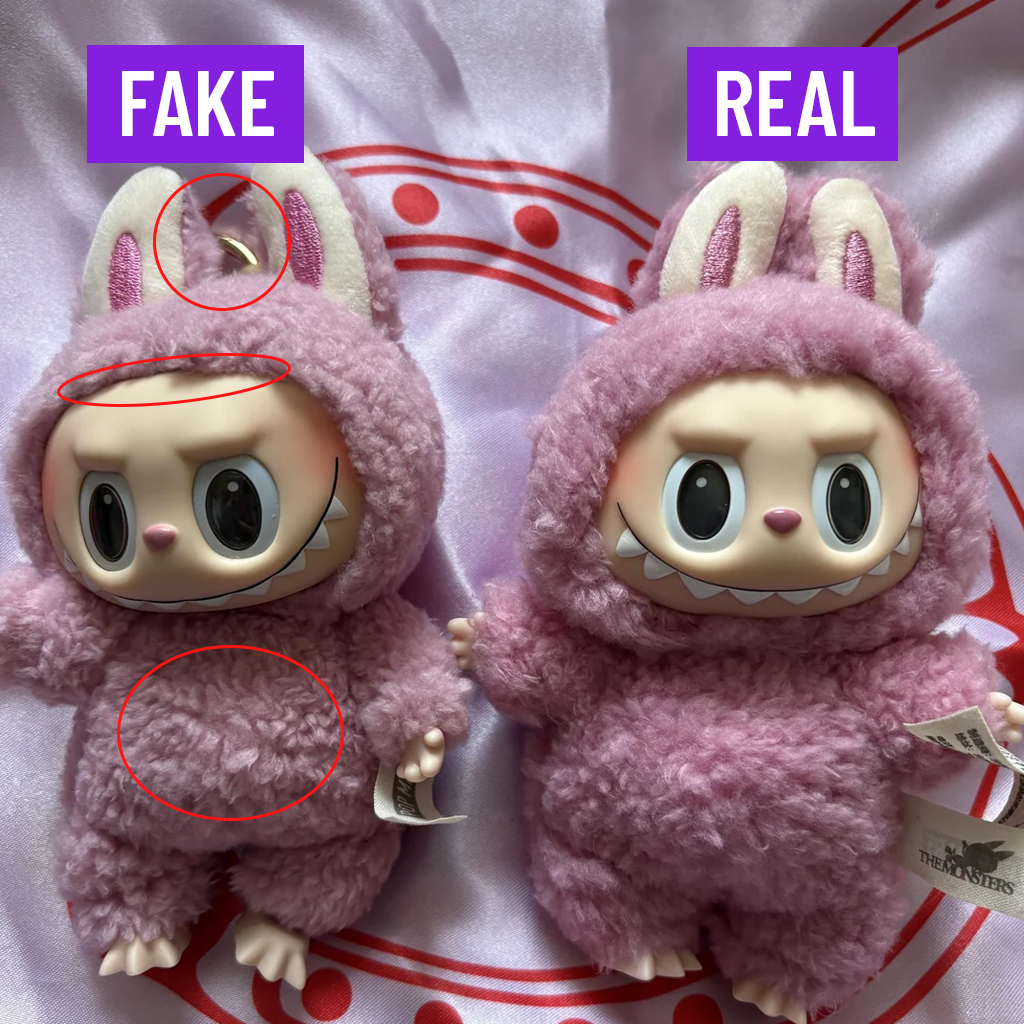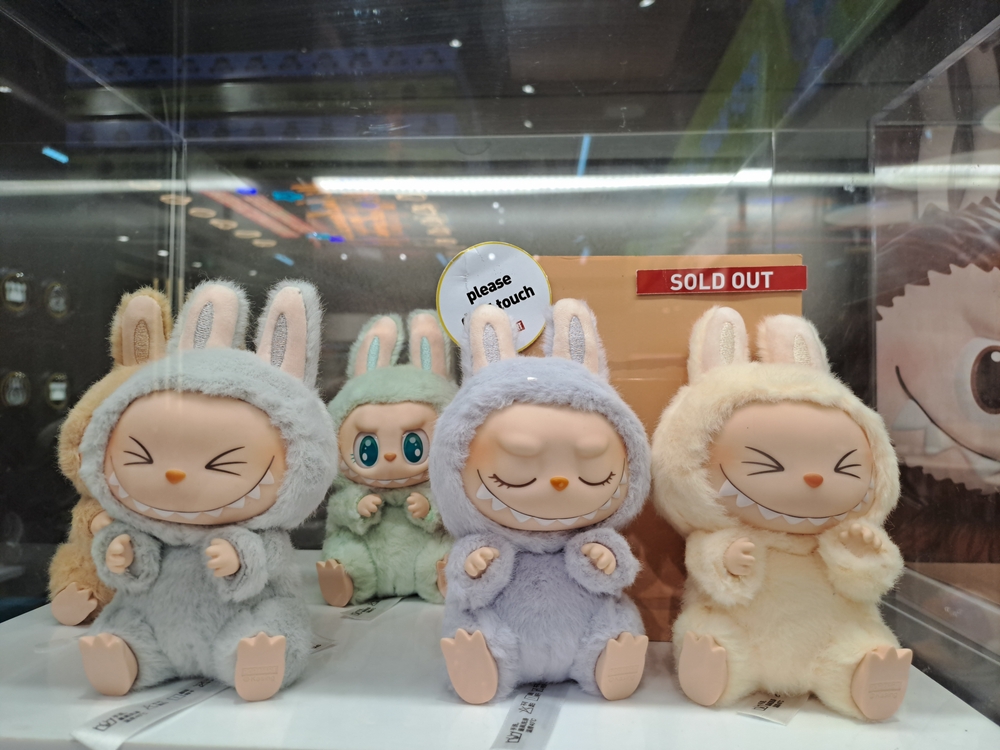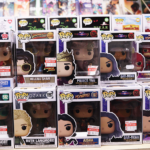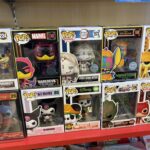With POP MART’s popularity growing, so has the rise of counterfeit products—especially for highly sought-after collectibles like Labubu the Monsters. Unfortunately, some fakes are so convincing that even seasoned collectors have trouble telling the difference. Here’s how you can spot the red flags and avoid buying a fake Labubu.
Key Differences in Packaging
Logo and Text Mistakes One of the easiest ways to spot a fake Labubu is by checking the logos and text on the box. Counterfeit products often have small errors like misspellings—common examples are “POP MATE” or “POPMARTS” instead of the correct “POP MART.” This detail is easy to miss, so be sure to inspect the packaging carefully.
Box Color and Quality The color and texture of the packaging can also give you clues. Fake versions often have slightly different tones and poor print quality. For example, real Labubu boxes feature clear, crisp logos, while counterfeit boxes may show blurry printing, particularly with “The Monsters” logo.
Additionally, genuine Labubu boxes feel softer to the touch and have matte plastic wrap. Fake boxes, on the other hand, often have a more rigid feel and shiny wrap.
Place of Origin Authentic Labubu products list Hong Shan City as the place of origin on the packaging. If the box says Shenzhen or another location, it’s a likely sign of a fake.
Reflective Watermark Genuine packaging has a reflective silver “Have a Seat” watermark, which is missing on counterfeit boxes. If the box has a blank silver surface instead, it’s a major red flag.
What’s Inside the Box?
Another way to confirm authenticity is by examining the contents.
- Dehumidification (DM) Bag Real Labubu figures always include a dehumidification bag inside the box, which is often missing in fakes. Even if the rest of the packaging looks convincing, the absence of this small but important item could mean you have a counterfeit.
- Pop Card The genuine product includes a pop card along with the figure. While some fake versions also include a card, the quality is usually poor, and there may be minor differences in color or design.
Physical Details of the Labubu Figure
Here we go. Once you’ve checked the packaging and box contents, turn your attention to the figure itself. Here are the key signs to look for:
- Teeth Count – Authentic Labubu figures have 9 teeth. If you see a figure with 10 teeth, it’s a fake. Some counterfeit versions have corrected this, but the number of teeth is still a quick way to spot older fakes.
- Texture and Finishing – The real Labubu has a distinctive “furry” texture, especially around the edges of the figure. In contrast, fake versions often lack this attention to detail, with smoother or shinier surfaces.
- Foot Stamp and UV Print – Genuine Labubu figures have a UV print icon on the right foot (for standing figures), which is only visible under UV light. On fake figures, this icon may either be missing or visible without UV light. Additionally, the stamp on a real Labubu’s foot is deeper and more precise, while fake ones have a shallower mark.
- Movable Feet – On real Labubu figures, the feet can move slightly but not fully rotate. Fake Labubus, especially Version 2, have feet that can rotate 360°, which is a clear sign of inauthenticity.
- Hairline – Fake Labubu often have what you would call a reclining hairline. The real Labubu hairline looks more blended and less crisp.
- Ears – The gap between ears shouldn’t be too big. Counterfeit Labubu may have a wider gap between ears. This can be an easy tell.

Authentication Methods: QR Codes and Scanning
POP MART includes a QR code system on all their authentic products. Scanning this code will verify whether the product is real or fake. However, counterfeiters have started replicating this system. A key difference is that when you scan a fake QR code, it may redirect to a different site (such as “b2c.cn”) before eventually displaying a fake POP MART page.
An easy test is to check the QR code scan history. Genuine codes will only show one scan date—the first time you check the product. If the code has been queried multiple times or shows a previous query date, it’s likely a reused code from a fake product.
Quality and Craftsmanship
Pay close attention to the quality of the figure. Real Labubu figures have a matte finish on their hands and feet, while counterfeit versions often use a more reflective material. Additionally, counterfeit figures may show visible stitching marks, especially around the face, hands, and feet.
Look closely at the figure’s face: authentic Labubu products have subtle, balanced blush and nose color, while the fakes may have uneven color tones. Another telltale sign is the eyes—counterfeit versions often have thicker, exaggerated eyelashes and eyeliner compared to the more refined details on a genuine Labubu.
Avoiding Fake Sellers
One of the easiest ways to avoid buying a counterfeit Labubu is by only purchasing from official POP MART stores, either online or in physical locations. Be cautious when buying from resellers, especially on platforms like eBay, where unverified sellers might sell fakes. Check the seller’s reviews and only buy from those with a good track record.
POP MART has even issued a statement warning fans about fraudulent websites claiming to sell their products. Always verify that you are on the official POP MART site or another recognized retailer before making any purchases.
Conclusion
With counterfeit Labubu figures becoming more common, it’s essential to be vigilant. By carefully examining the packaging, figure details, and using POP MART’s authentication tools, you can protect yourself from buying a fake. Stick to trusted sellers, and if something seems off—whether it’s the color, texture, or scan history—trust your instincts and avoid the purchase. Happy collecting!









